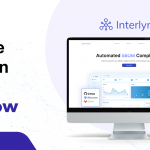How to Create WordPress Website in Elementor Builder
- Anurag Pandey
- Last updated on October 17, 2024
- WordPress
- 11 minutes read
Table of Contents
ToggleBuilding a WordPress website from scratch, whether for a blog, e-commerce site, or business, can be challenging—especially if you’re unfamiliar with coding or web design. Fortunately, Elementor Builder simplifies this process.
As one of the most popular WordPress Elementor page builders, it allows you to easily create stunning, professional-looking WordPress websites. Thanks to its intuitive drag-and-drop interface, you can design your site without any technical knowledge.
I specialize in building WordPress websites using Elementor Builder and have created many websites for clients on platforms based on their specific needs. With an in-house team of experienced WordPress developers,
I can help you build a professional WordPress Elementor website, even if you don’t have technical knowledge, that saves you time and effort.
Introduction
In the past, building websites was something only professionals could handle. However, in today’s digital world, many tools and resources have become available to make this process accessible to everyone.
One such tool is Elementor. With Elementor Builder, anyone can create a beautiful WordPress website without writing a single line of code. Whether you’re a small business owner, established entrepreneur, or running an e-commerce store, WordPress Elementor Builder allows you to build a site based on your specific needs.
If you need a basic understanding of building a website using Elementor builder, this blog will guide you through the process, explaining Elementor, the differences between free and paid versions, and how to create a site step by step.
By the end of this tutorial, you’ll have a fully functional website up and running. So, let’s explore the process!
What is Elementor?
Elementor helps you to build any type of website based on your requirements. Elementor is a WordPress plugin that helps you create custom web pages with a simple drag-and-drop tool. It’s made for people who don’t know how to code or design. With Elementor Builder, you can easily add text, images, videos, and buttons to your page and arrange them however you want.
Key Features of Elementor
- Drag-and-Drop Editor: You can build your website by dragging and dropping elements without coding skills.
- Pre-designed Templates: Elementor Builder gives you 100+ pre-built templates that can easily customized based on your requirements.
- Real-Time Editing: You can see your website changes as you make it, with updates showing right away as you make edits.
- Mobile Responsive Design: Elementor Builder allows you to optimize your website for mobile, tablet, and desktop views.
- Customizable Widgets: Elementor Builder gives you tools like image galleries, contact forms, and social media icons to add to your pages.
Elementor Free vs Elementor Pro
Elementor Builder offers a free version with many features, but the Pro version provides even more advanced functionalities. If you’re planning to build your website with Elementor Builder, it’s essential to understand the key differences between the two versions.
To help you make an informed decision, I am sharing with you a simple comparison table outlining the features of Elementor Free vs. Elementor Pro. Take a look below:
| Feature | Elementor Free | Elementor Pro |
| Drag-and-Drop Editor | Yes | Yes |
| Pre-designed Templates | Yes but limited | Full access over all templates |
| Mobile Editing, 100% Responsive | Yes | Yes |
| Widgets | 57+ Basic Widgets | 86+ Pro Widgets |
| Theme Builder | No | Yes |
| Form Builder | No | Yes |
| Popup Builder | No | Yes |
| Dynamic Content | No | Yes |
| WooCommerce Builder | No | Yes |
| Custom CSS | No | Yes |
| Advanced Design Controls | Limited | Yes |
| Price | Free | Starts with $4.92/Monthly |
| 24/7 Support | No | Yes |
As you see above the key difference in both is that the free version of Elementor Builder is enough to build a simple and basic website. But if you need advanced features like form building, custom CSS, or WooCommerce for online stores, choosing Elementor Pro is a good choice.
It offers extra tools like a Theme Builder and WooCommerce integration for more customized websites.
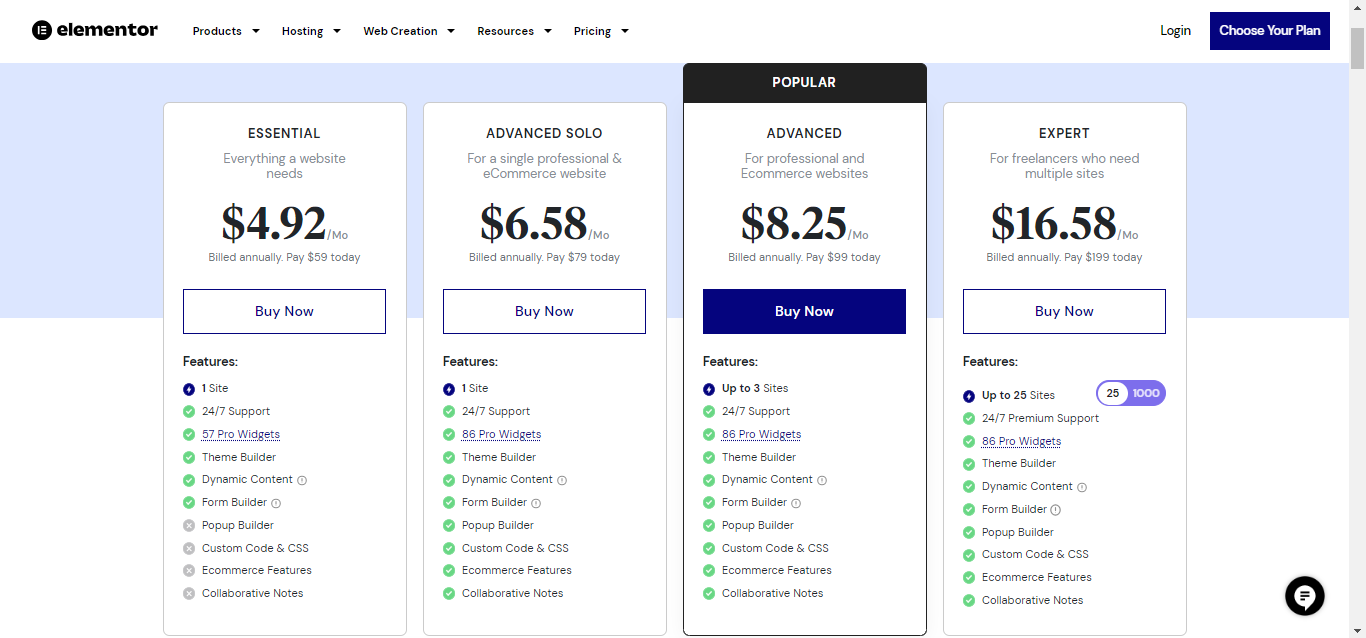
How to Install Elementor in WordPress
If you’re planning to create a WordPress website using Elementor Builder, the first step is to install the plugin on your site. If you’re new to WordPress Elementor and unsure how to install Elementor, don’t worry!
I’m sharing a step-by-step guide to help you install and start using Elementor Builder. Let’s explore in below:
Step 1: Install WordPress
First, set up your WordPress website by either installing it on your hosting server or using a managed hosting provider like Bluehost, SiteGround, or WP Engine. Once the WordPress is installed and running, you can install Elementor Builder.
Most web hosts offer a simple one-click installation for WordPress. If you are looking for the best WordPress hosting in 2024, then you can check out our blog for Top wordpress hosting solutions to help you decide easily!
Step 2: Log into Your WordPress Dashboard
Once your WordPress setup is ready, you need to log in to your WordPress dashboard by navigating to yourdomain.com/wp-admin. Then you can use your credentials to log in admin panel.
Step 3: Install the Elementor Plugin
Once you have logged into your WordPress dashboard, go to Plugins > Add New. In the plugin search bar, type “Elementor.” When the Elementor Page Builder plugin appears, click “Install Now” and then select “Activate.”
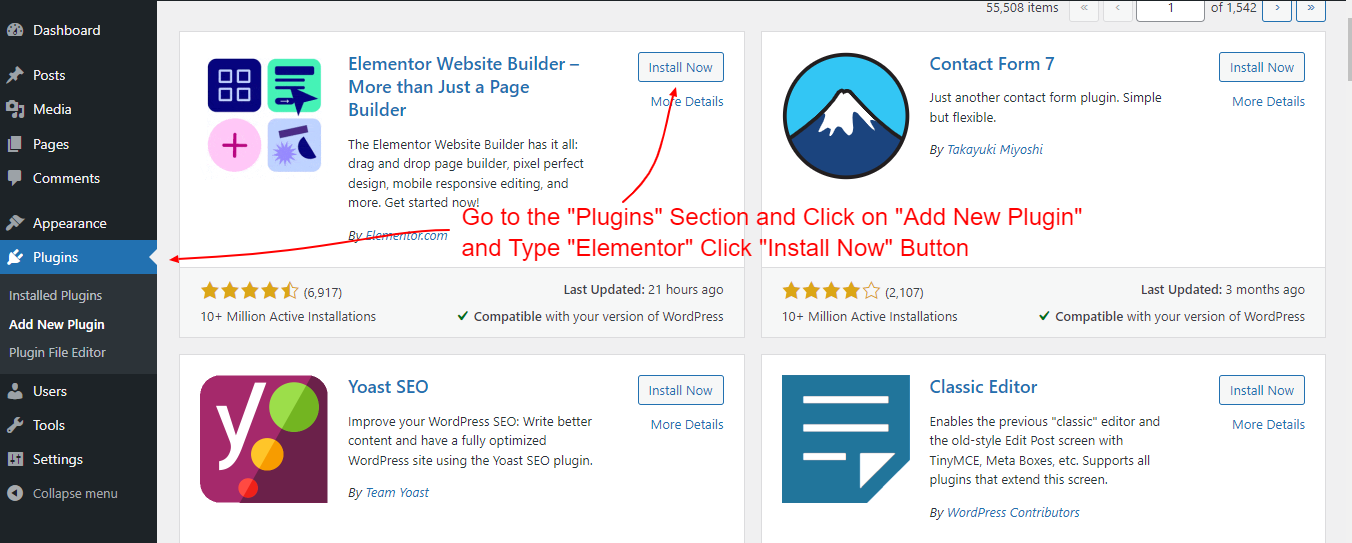
Step 4: Install Elementor Pro (Optional)
If you need more features and want to upgrade to Elementor Pro, you’ll need to purchase it from the Elementor website. After completing your purchase, download the Elementor Pro plugin and upload it to WordPress via the files > Add New section.
Once Elementor Pro is installed and activated, you can start building your website with Elementor Builder! If you need technical expertise to create your WordPress website using Elementor, I can help you. I have experience building websites with both the free and pro versions of Elementor Builder.
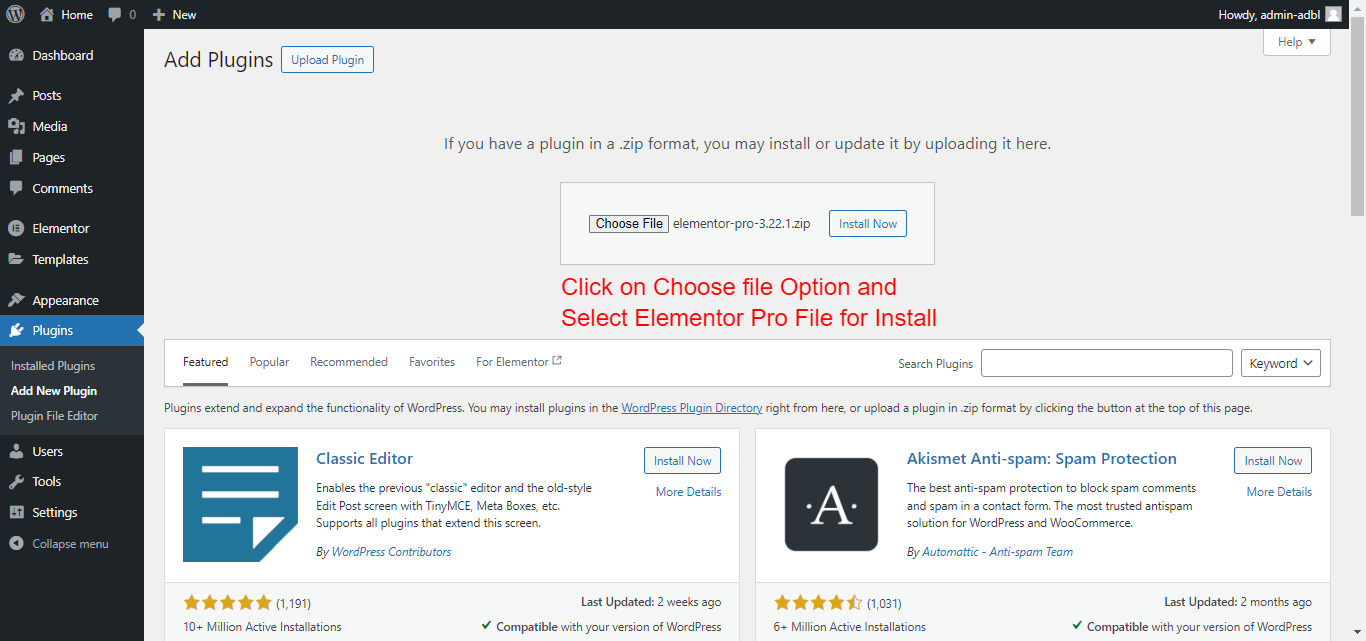
Steps by Steps to Create a WordPress Website in Elementor Builder
Now that Elementor is installed, it’s time to create your website using the Elementor builder. Let’s go through the process step by step.
We have already covered how to set up WordPress, so ensure that you have everything in place: a domain name, web hosting, and the WordPress platform installed. We also explained how to install Elementor earlier, so now let’s understand right into creating your website. Have a look below:
Step 1: Access Elementor
To use Elementor Builder, go to the “Pages” section in WordPress and click “Add New.” Then, click “Edit with Elementor” to enter the Elementor editor.

Step 2: Select a Template or Create from Scratch
Elementor Builder provides you with two options: you can either select a pre-designed template or create your page from scratch.
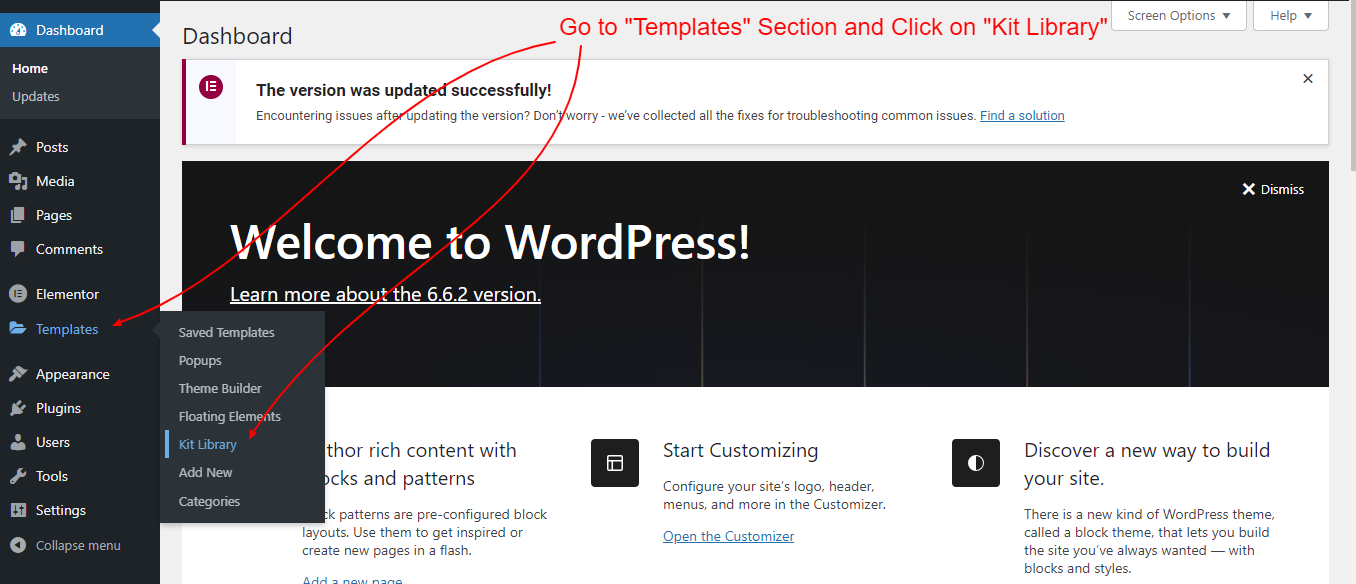
With Elementor, you have access to over 100 pre-built templates. To choose a pre-designed template, click on the folder icon in the Elementor editor. You can browse through the templates and select one that fits your needs. Additionally, you can customize any selected template to match your brand.
If you prefer to build from scratch, click on the blank canvas option. From there, you can add or remove sections, columns, and widgets according to your requirements.

Step 3: Customize Your Pages with Elementor Builder
Now it’s time to customize your pages! You can simply customize your web page with 3 options such as:
1. Add Sections and Columns: You can add sections (which act like rows) and split them into columns to organize your content. Click the “+” button to add a new section, then choose your desired column layout.

2. Add Widgets: In the Elementor editor, the left panel displays a list of widgets. These elements, such as text boxes, images, buttons, and videos, can be dragged into your sections and columns. Simply drag a widget from the left panel and drop it where you want it on the page.
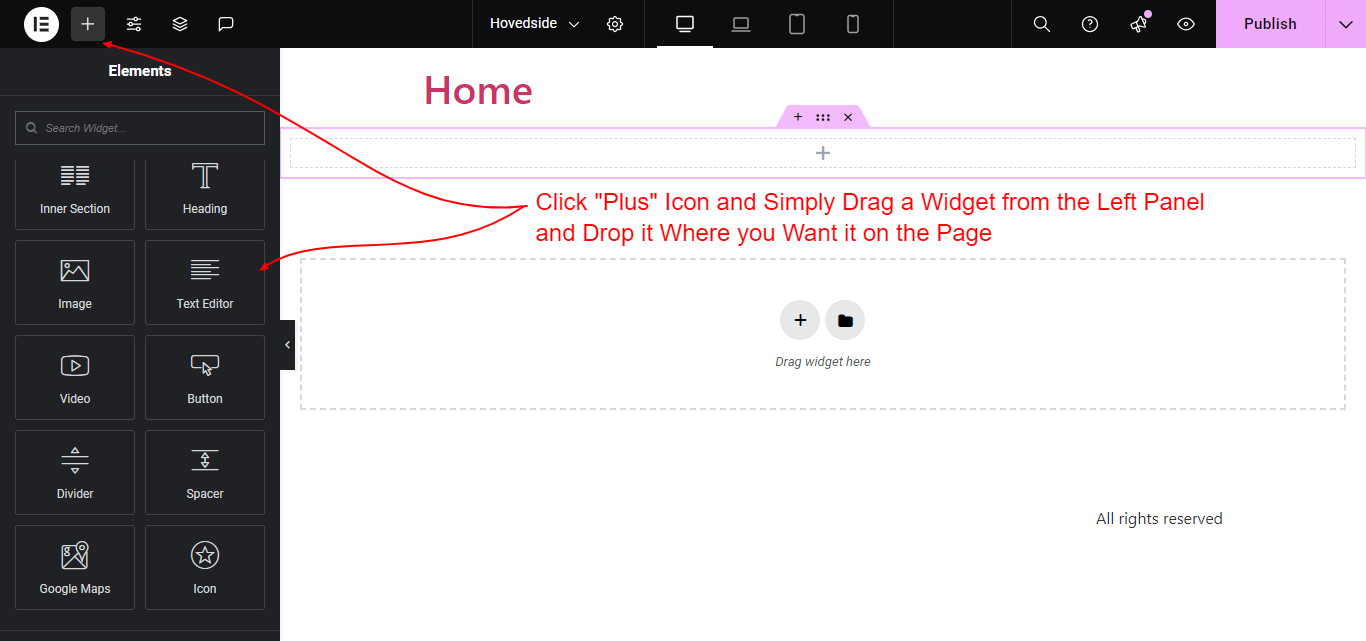
3. Customize Design: You can customize each one after placing your widgets. You have to click on a widget to access its settings. For example, with a text widget, you can change the font, size, color, and alignment. You can upload an image and adjust its size and position.

Step 4: Add Functionality with Widgets
Elementor Builder includes basic widgets like text, images, and buttons, but Elementor Pro offers a range of advanced widgets to enhance your website.
With the Forms widget, you can create contact forms, surveys, or signup forms to collect user information easily. The Slides widget allows you to add image sliders to your homepage, making it more dynamic and visually appealing. Additionally, you can use the pop-up feature to create attention-grabbing pop-ups that engage visitors effectively.
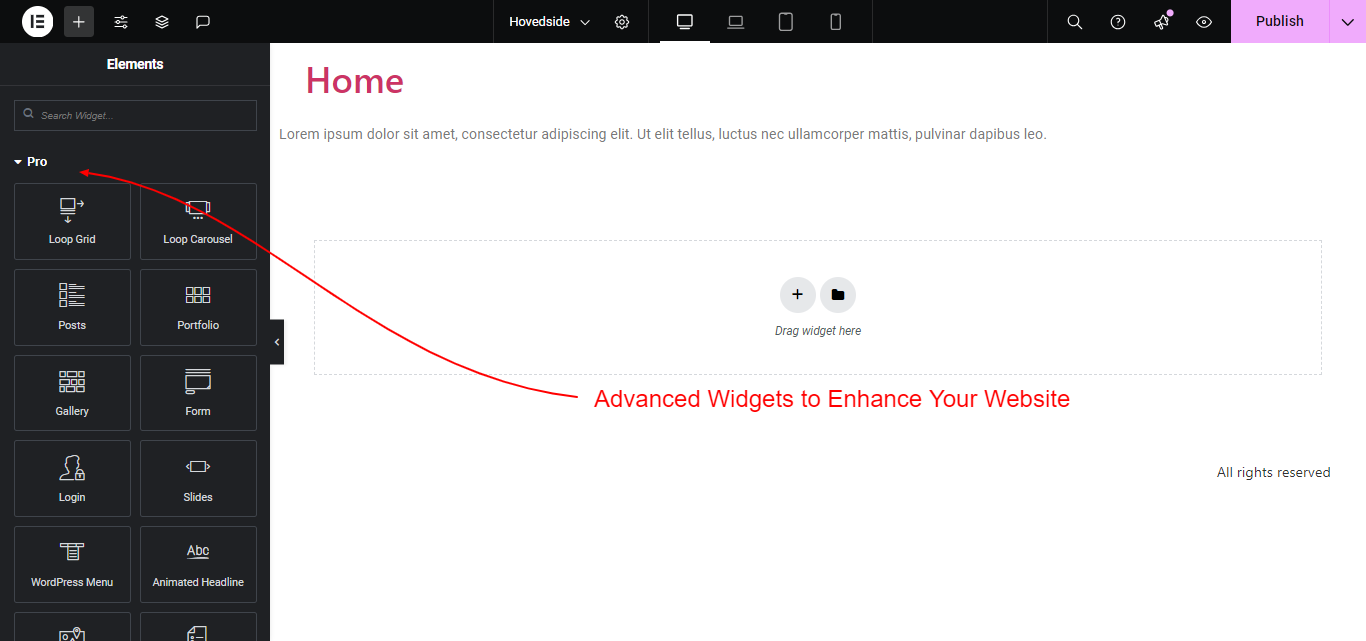
Step 5: Optimize for Mobile website
Your website should look great on all devices, not just desktops, and Elementor makes it easy to optimize your website for mobile and tablet users.
To access the Responsive Settings, You need to click on the responsive mode icon at the bottom left of the Elementor builder editor. This feature allows you to switch between desktop, tablet, and mobile views, enabling you to adjust the layout for each device and ensure your wordpress website is fully responsive.

You can also make Mobile-Specific Adjustments for a better user experience. For example, you might want to reduce the font size or hide certain elements on smaller screens to keep your site looking clean and uncluttered.
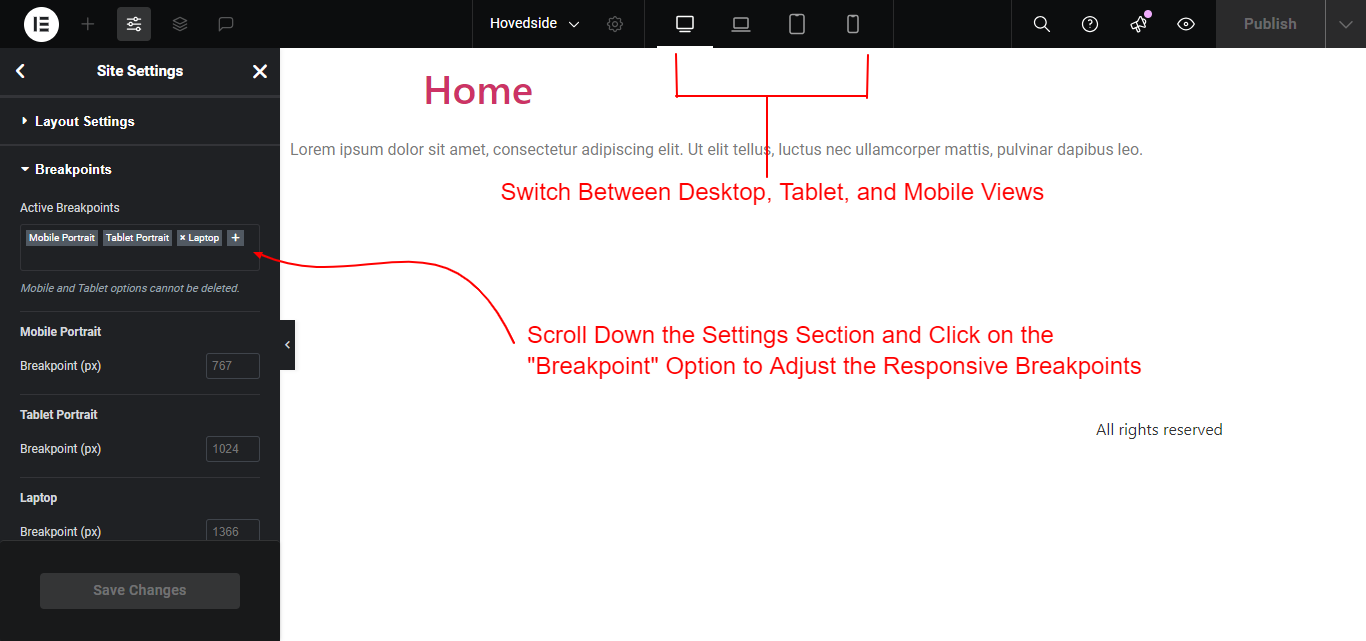
Step 6: Preview and Publish
Once you’re satisfied with the design, you can preview your page before publishing to ensure everything looks perfect. Simply click the eye icon at the bottom of the Elementor editor to view your wordpress website.
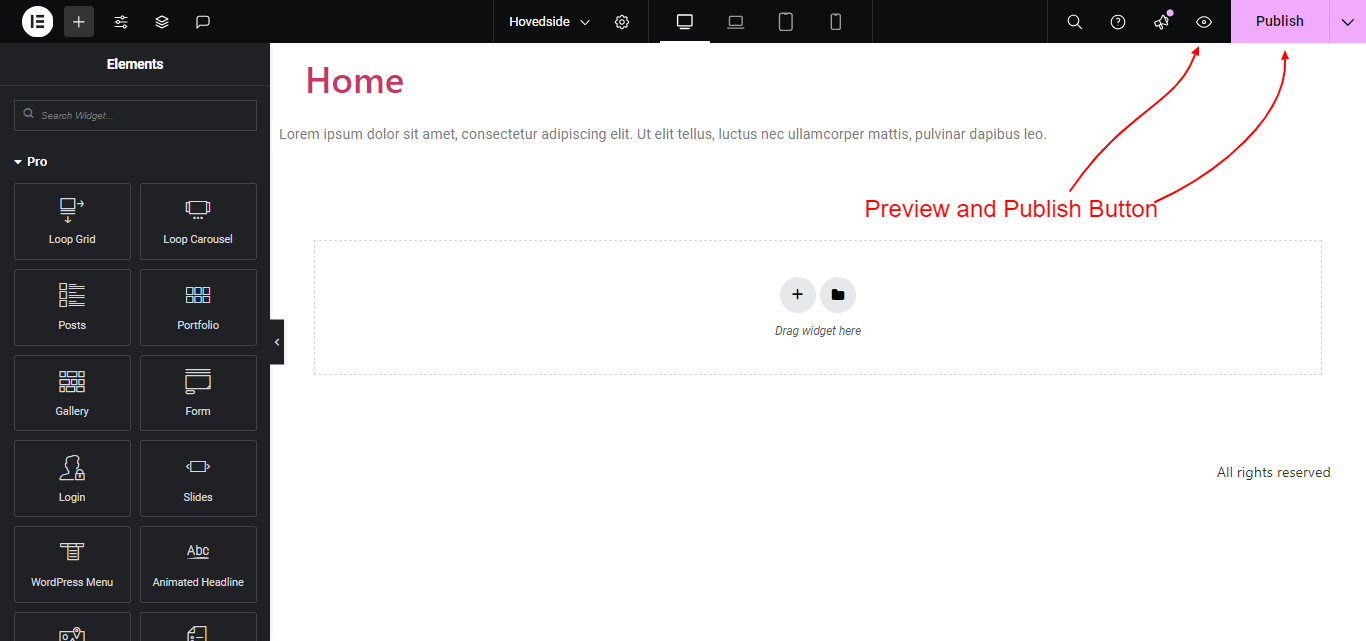
If you are happy with the design, click the green “Publish” button. Your wordpress website is now live and accessible to visitors!
Keyboard shortcuts for using Elementor builder in WordPress
Here are some easy keyboard shortcuts for using Elementor Builder in WordPress. These shortcuts will help you design faster and save time while building your wordpress website.
| Action | Windows/Linux Shortcut | Mac Shortcut |
| Undo or Redo any changes | Ctrl+Z | Cmd+Z |
| Copy a section, content, column, widget | Ctrl+C | Cmd+C |
| Paste a section, content, column, widget | Ctrl+P | Cmd+P |
| Duplicate a section, column, widget | Ctrl+D | Cmd+P |
| Save your changes | Ctrl+S | Cmd+S |
| Finder to Search for Anything | Ctrl+E | Cmd+E |
| Show or hide the side panel | Ctrl+P | Cmd+P |
| To manage site settings | Ctrl+K | Cmd+K |
| To manage page properties | Ctrl+Y | Cmd+Y |
| Open the history of previous work | Ctrl+H | Cmd+H |
| Opens User Preferences | Ctrl+U | Cmd+U |
| To check the responsiveness mode | Ctrl+M | Cmd+M |
| To see the template library | Ctrl+L | Cmd+L |
| To exit to the dashboard | Press ESC | Press ESC |
Tips and tricks for getting started with Elementor Builder
Before you start building your website with WordPress Elementor, here are some easy tips and tricks to help you understand the tool better. These tips will give you a basic understanding of how to use Elementor Builder effectively as you work on building your website.
Let’s explore the tips and tricks below:
- Start with a Pre-designed Template: Elementor Builder provides you with a wide range of pre-designed templates based on different website types and needs. If you’re new to web design or unsure how to start, these templates are a great way to start. Simply import a template, customize it to fit your requirements, and build your website quickly and efficiently, saving both time and effort.
- Use Sections and Columns: Elementor Builder typically works on a system of sections and columns. The section works as an overall container, whereas columns help you to structure your content within a section. It allows you to create a flexible, responsive website design that looks good on both desktop and mobile devices.
- Use Widgets: WordPress Elementor comes with a wide variety of widgets and allows you to add elements to your website like text, images, buttons, videos, and many more elements depending on your website’s requirements. It helps you to understand how to create creative and unique designs.
- Global Widgets: Global Widgets allow you to save a widget for future pages and use it across different pages on your website. If you make a change to the global widget, it will update everywhere in the webpage you’ve used it, saving you time and effort.
- Preview Your Work on Mobile: Elementor lets you create your website so that it looks good on all devices. You can easily switch between desktop, tablet, and mobile views to make sure your site looks great on all devices.
Conclusion
Elementor Builder is a great choice for building websites because it gives you a user-friendly drag-and-drop interface along with powerful customization features. You can create a beautiful, functional site without having technical knowledge and coding skills, whether you’re a beginner or an expert.
If you’re looking for help in turning your website idea into reality, feel free to reach out to us. My team and I have extensive experience creating WordPress Elementor websites and other popular builders like Divi, Oxygen, and Bricks.
We’ve worked with clients on platforms like UpWork and Clutch, optimizing websites with tools like Gutenberg, Kadence AI WP, and performance plugins such as WP Rocket and W3 Total Cache.
We’re here to assist with your online business needs. If you’re looking for professional WordPress solutions for your business, let’s connect and make it happen!
Anurag Pandey
Recent Posts
Categories
Hire Developers
About us
Popular Posts
Tags
Related Articles
How to Create a WordPress Website in Gutenberg: A Step-by-Step Guide
Building a WordPress website has become super easy with the help of the Gutenberg block editor. This powerful block editor allows you to develop and design your website effortlessly without requiring technical skills.
Webflow vs WordPress in 2024: Which is Better for Your Website?
WordPress and Webflow are both website design platforms. However, no two websites are exactly the same; each has a unique set of requirements. As a web designer, you can select which platform to utilize to create the websites you design.
12 Best wordpress website to Inspire Your Own 2024
WordPress is far more than just a blogging platform; it’s also a powerful content management system (CMS) capable of managing everything from huge commercial sites to high-traffic magazines.
Sign up for our Newsletter



